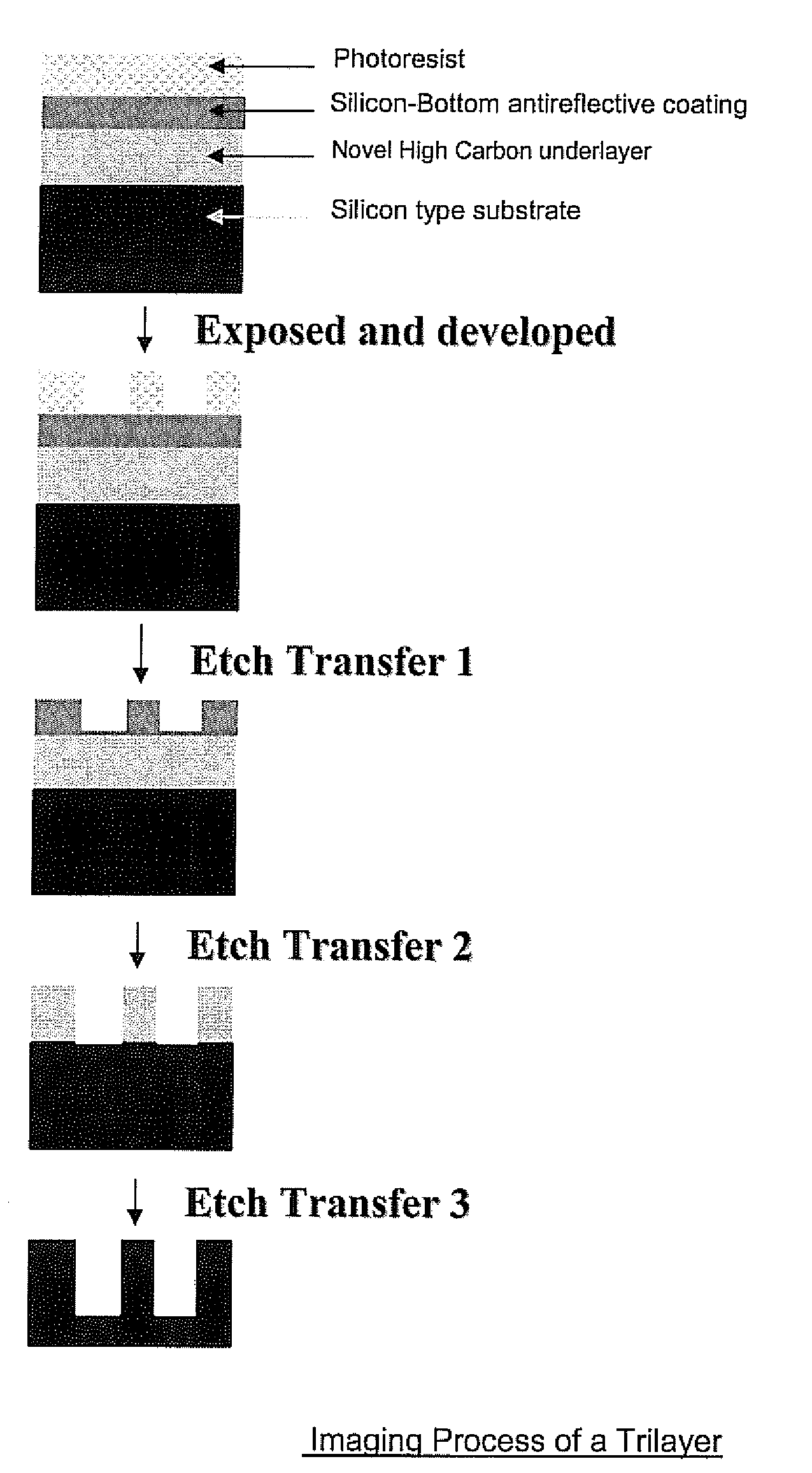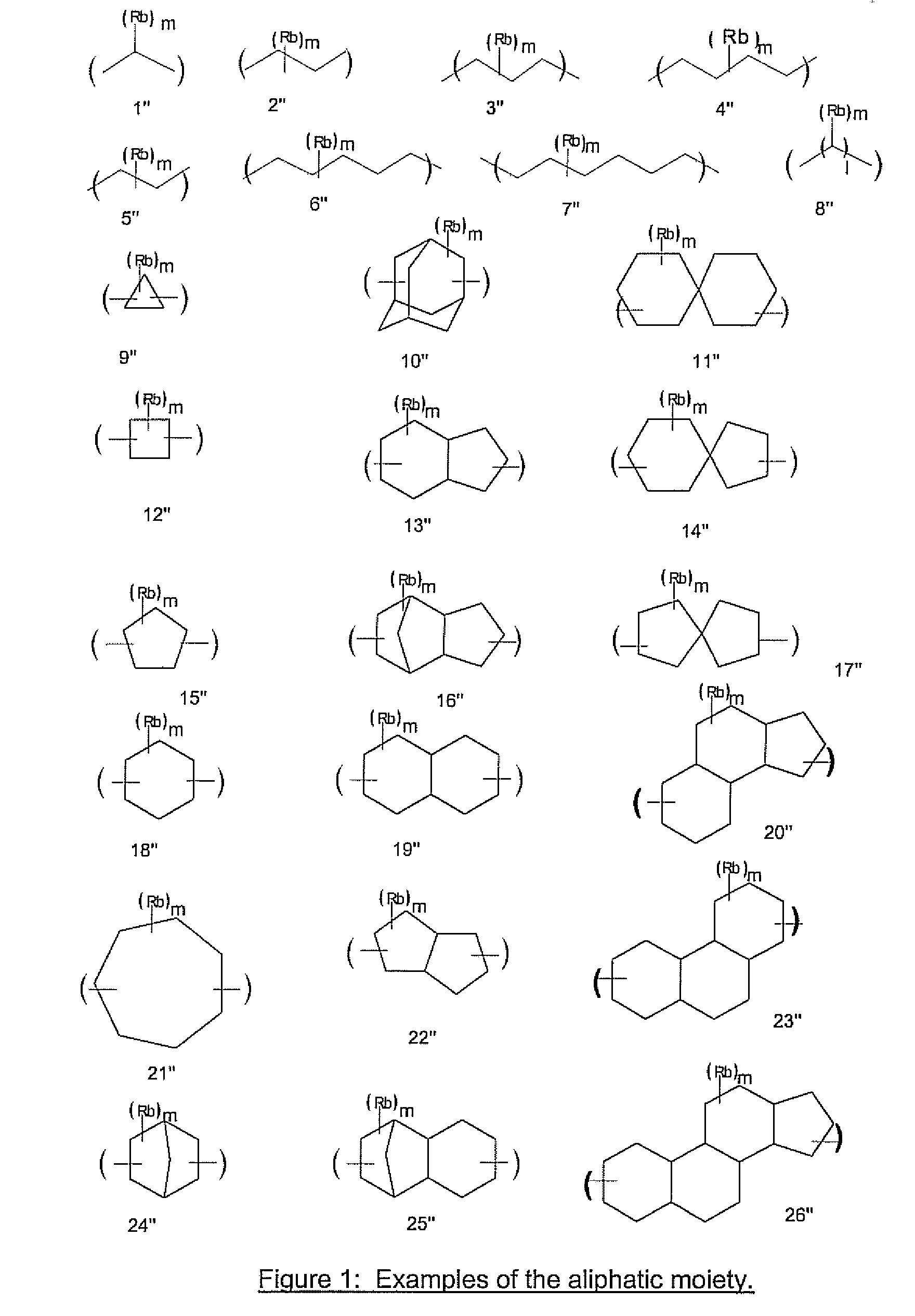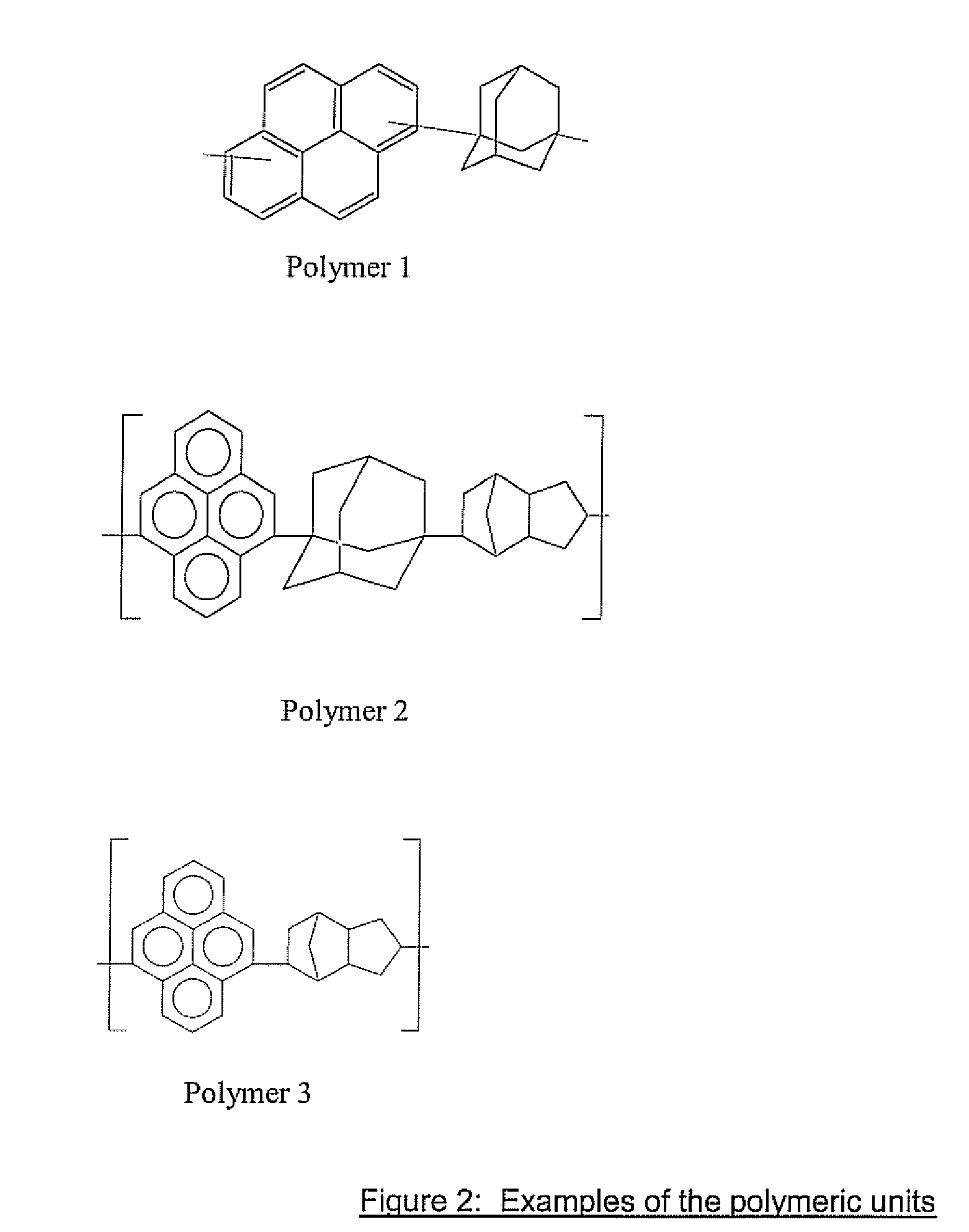Antireflective Coating Composition Comprising Fused Aromatic Rings
a technology of anti-reflective coating and aromatic rings, which is applied in the direction of photosensitive materials, instruments, photomechanical equipment, etc., can solve the problems of back reflectivity, thin film interference effects and reflective notching, and change in critical line width dimensions
- Summary
- Abstract
- Description
- Claims
- Application Information
AI Technical Summary
Benefits of technology
Problems solved by technology
Method used
Image
Examples
example 1
Synthesis of Polymer
[0045]A solution was prepared consisting of 1.8157 grams (8.977×10−3 moles) of pyrene, 1.51 grams (8.977×10−3 moles) of 1,3-adamantanediol and 0.15 grams of triflic acid dissolved in 10 ml of nitrobenzene, which was placed in a round bottomed flask which was purged slowly with nitrogen. The reaction was heated in an oil bath to 100° C. and left to stir at this temperature overnight. After this time the reaction mixture was precipitated into 500 ml of methanol. The recovered solid was air dried and then dissolved into 10 ml of cyclohexanone and precipitated into methanol one more time. The material isolated from this precipitation was dissolved into 10 ml of cyclohexanone and precipitated into 500 ml of hexane. After drying, 1.94 grams of polymer was recovered (58% yield). The polymer had a weight average molecular weight Mw of 2,200 and polydispersity of 2. The Proton NMR was: 1-3.2 ppm (adamantane unit), 7.3-9.2 ppm (pyrene unit), with a ratio of 3.75 to 5 in in...
example 2
[0047]A solution was prepared by using the polymer of example 1 and formulated as a 2.5 wt % solids solution additionally consisting of 3 wt % diphenyliodonium nonaflate (thermal acid generator, TAG) and 10% TMOM-BP (cross-linker), in cyclohexanone. This solution was spin coated at 1,500 rpm for 3 minutes and baked at 250° C. for 1 min. After curing at 250° C. for 1 min, the film was unaffected by cyclohexanone, PGMEA, PGME or a mixture of 70 / 30 PGMEA and PGME in a 1 minute soak test. However, prior to this cure, edge bead removal can be done with cyclohexanone.
example 3
Synthesis of Polymer
[0048]Pyrene (20.2 g, 0.1 mole), 1,3-adamantane diol (8.41 g, 0.05 mole) and chloroform (100 g) were placed into a 500 ml flask equipped with stirrer, condenser and thermowatch, and mixed for 10 minutes under nitrogen at room temperature. Perfluorobutane sulphonic acid (3.0 g) was added and heated to reflux for 10 hours. Chloroform (100 g) and water (100 g) were added after cooling to room temperature, and 3.65 g of tetramethyl ammonium hydroxide (TMAH) 25% solution in water was also added and stirred for 30 minutes. The reaction mixture was transferred to a separating funnel and extracted with deionized (DI) water three times. The solvent was evaporated using rotary evaporator to very concentrated syrup and drowned into 1.5 liter methanol. A precipitate was formed, and the solid was filtered and dried. The polymer was redissolved in 74 g chloroform and reprecipitated from 1.5 liter hexane, filtered through Buckner funnel and dried in the vacuum oven. The yield w...
PUM
| Property | Measurement | Unit |
|---|---|---|
| temperature | aaaaa | aaaaa |
| refractive index | aaaaa | aaaaa |
| refractive index | aaaaa | aaaaa |
Abstract
Description
Claims
Application Information
 Login to View More
Login to View More - R&D
- Intellectual Property
- Life Sciences
- Materials
- Tech Scout
- Unparalleled Data Quality
- Higher Quality Content
- 60% Fewer Hallucinations
Browse by: Latest US Patents, China's latest patents, Technical Efficacy Thesaurus, Application Domain, Technology Topic, Popular Technical Reports.
© 2025 PatSnap. All rights reserved.Legal|Privacy policy|Modern Slavery Act Transparency Statement|Sitemap|About US| Contact US: help@patsnap.com



